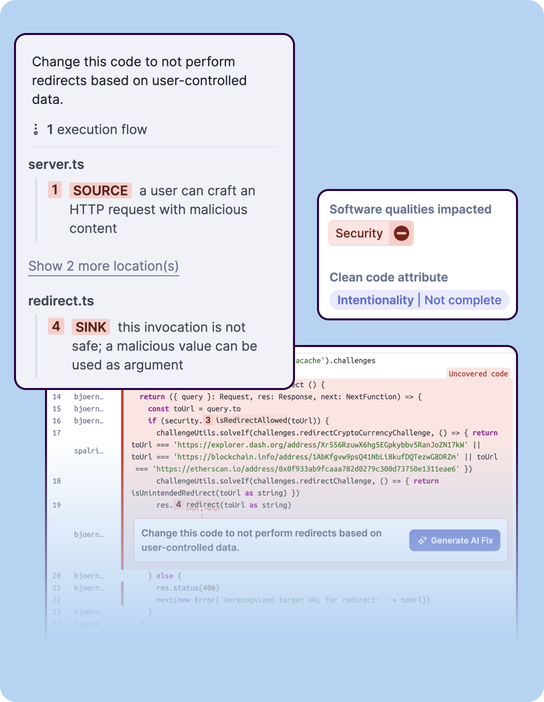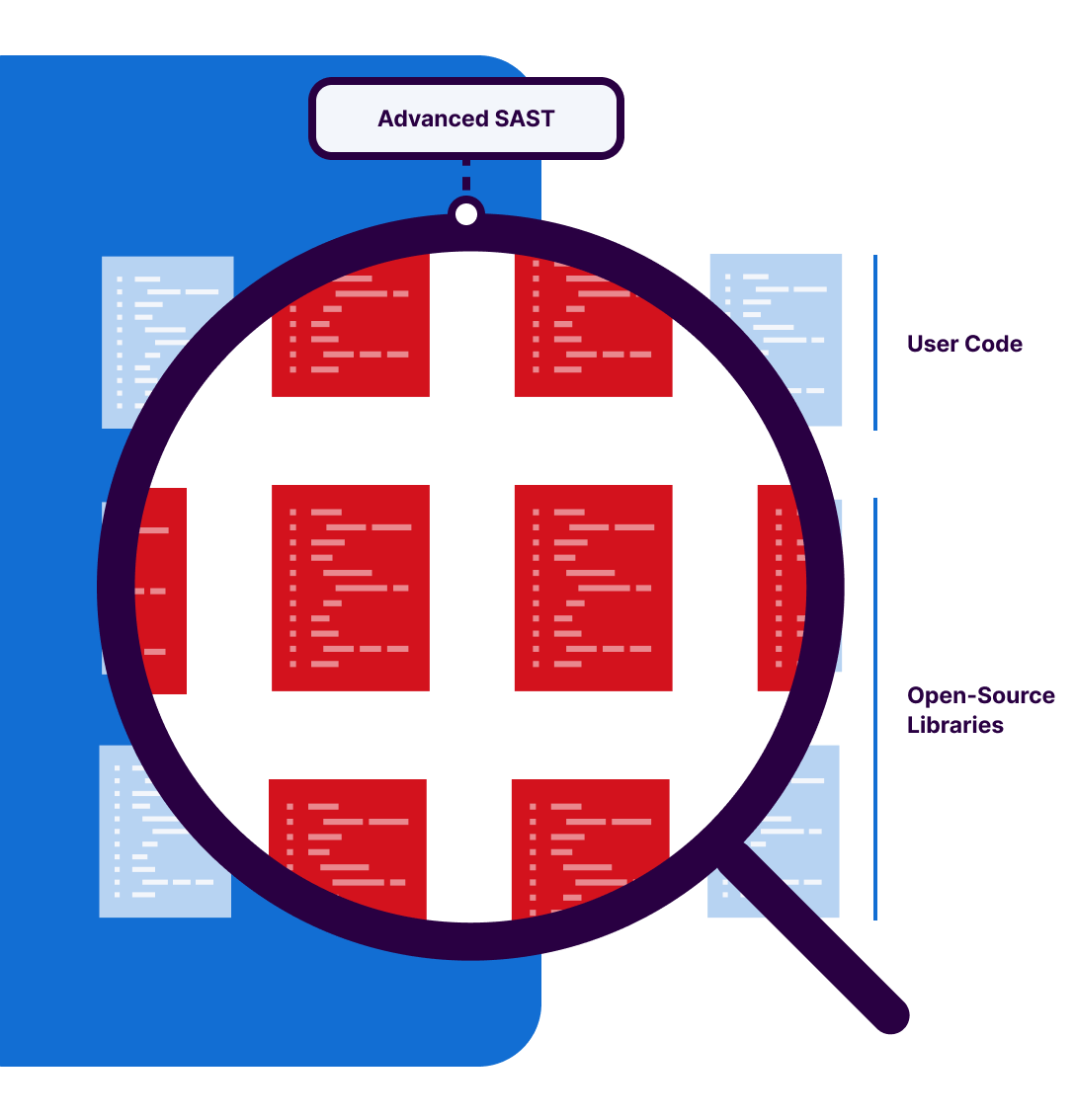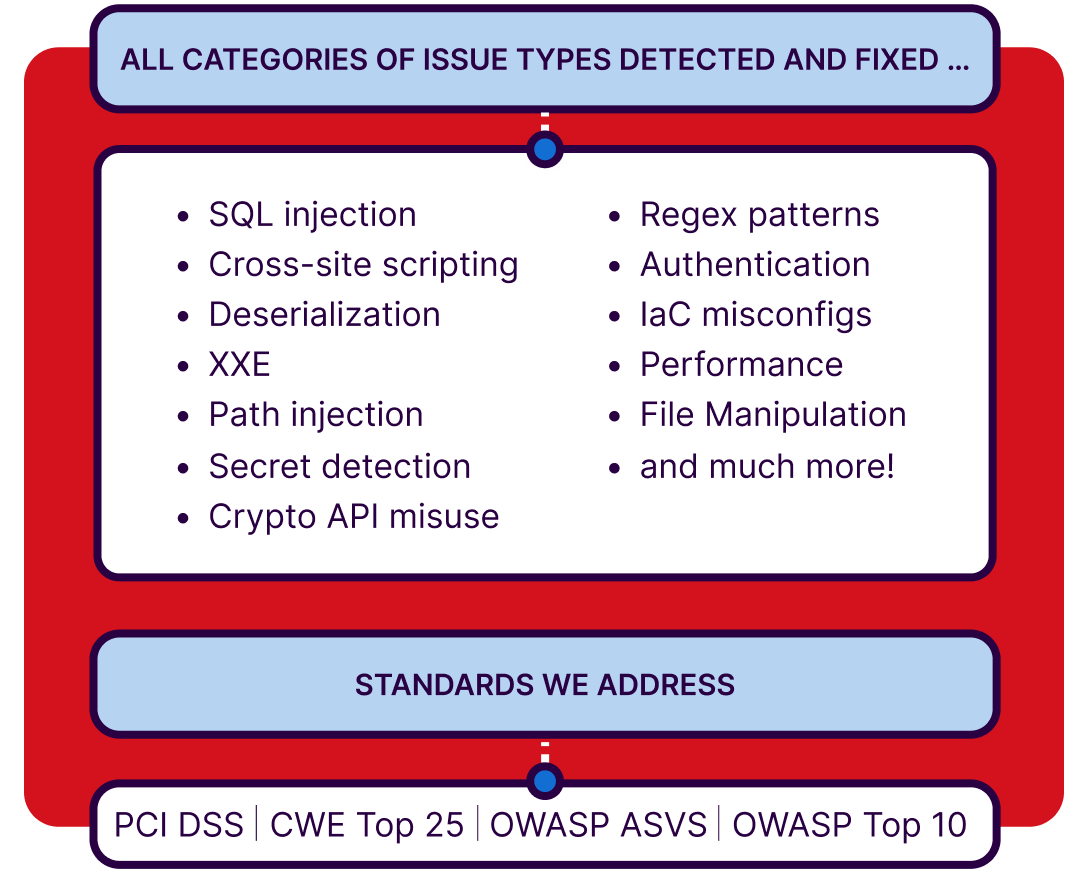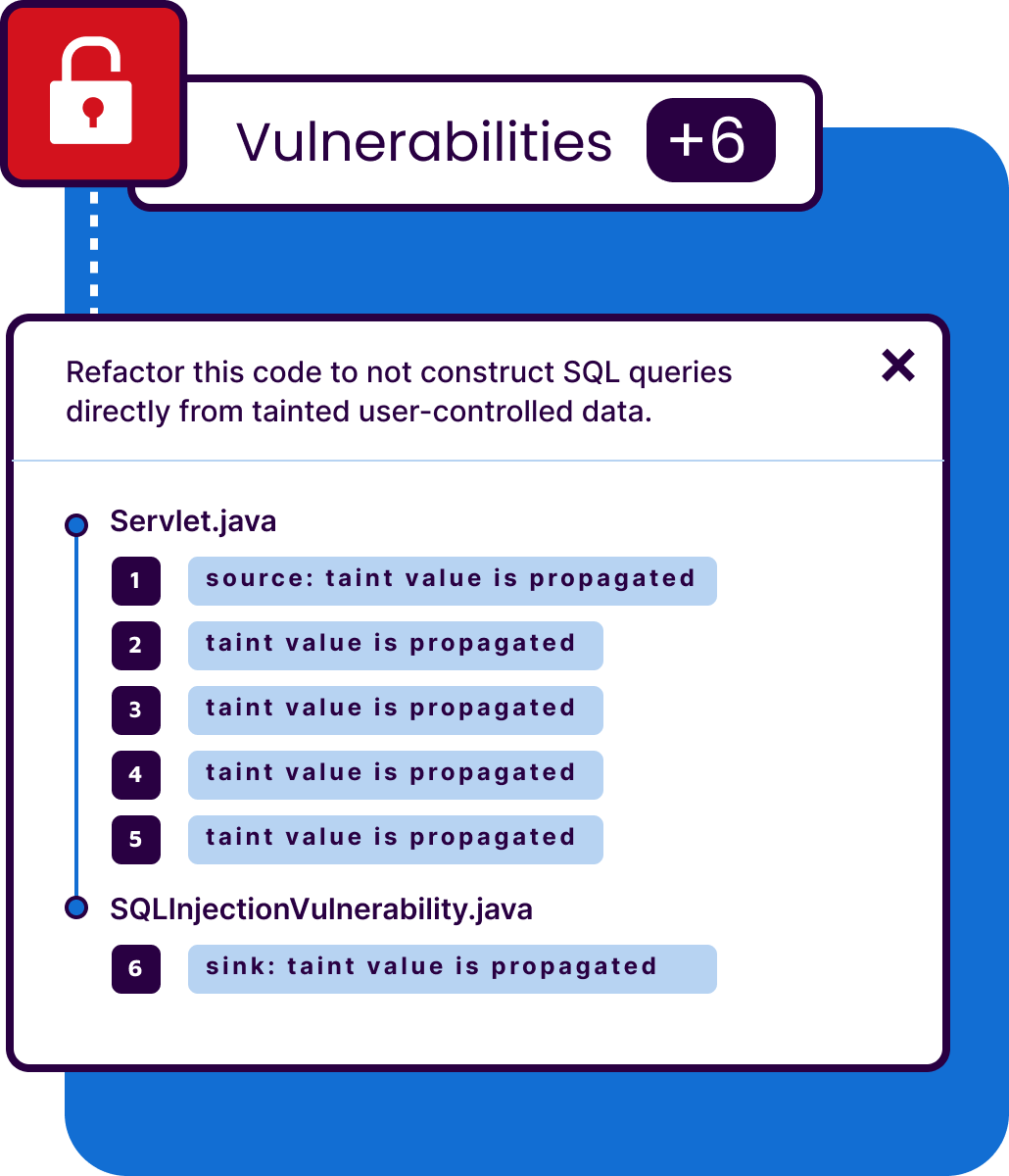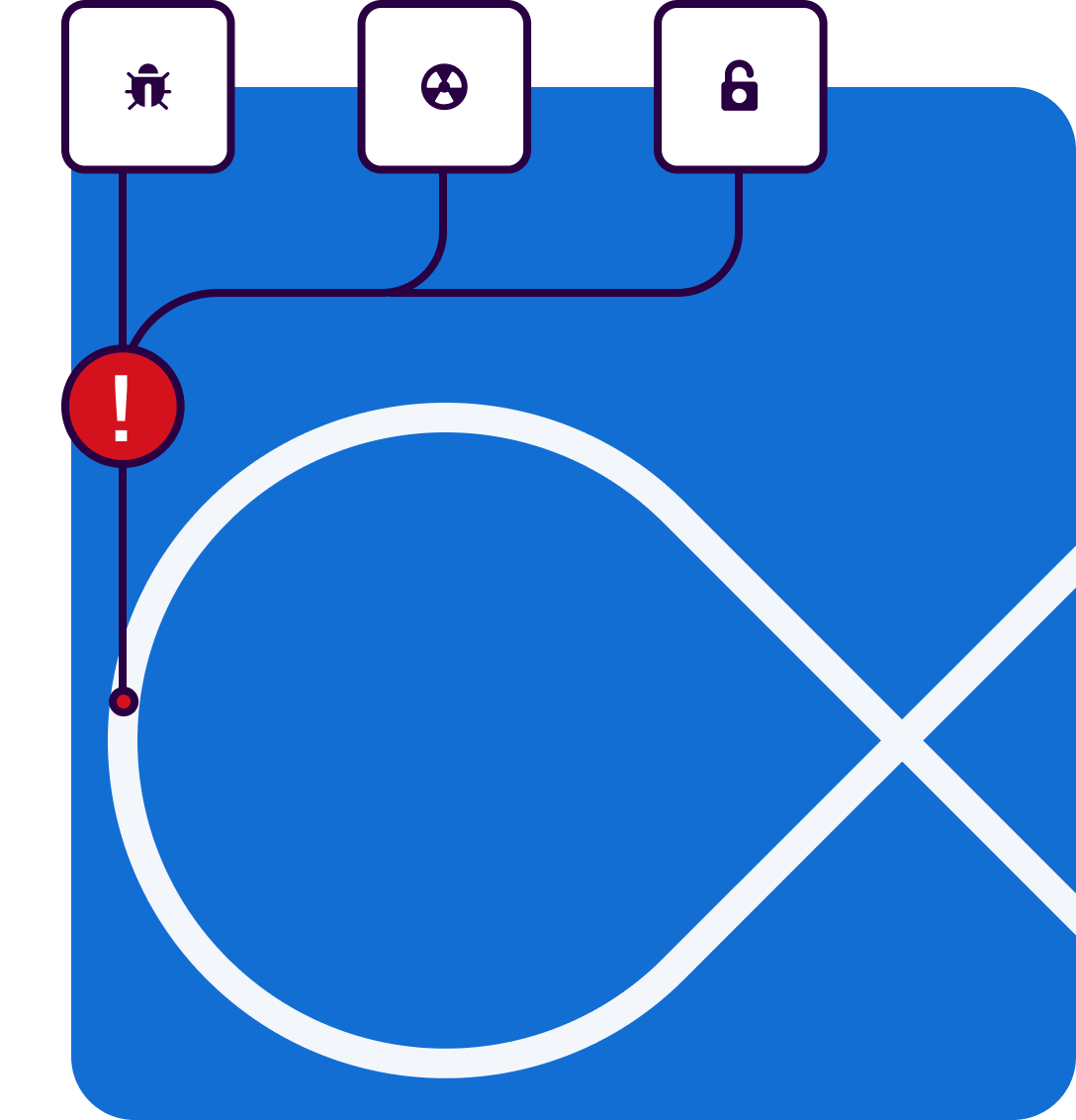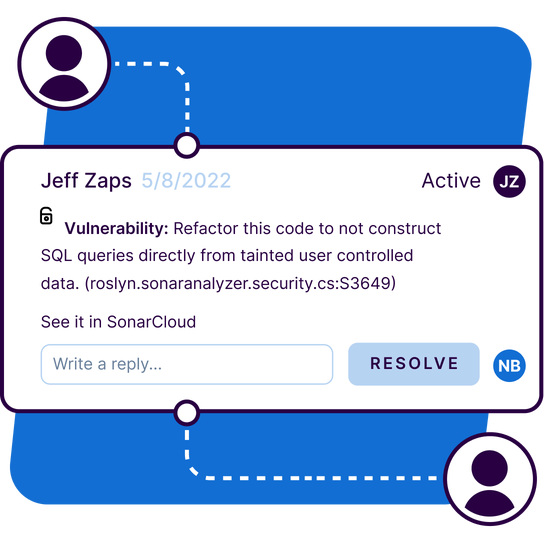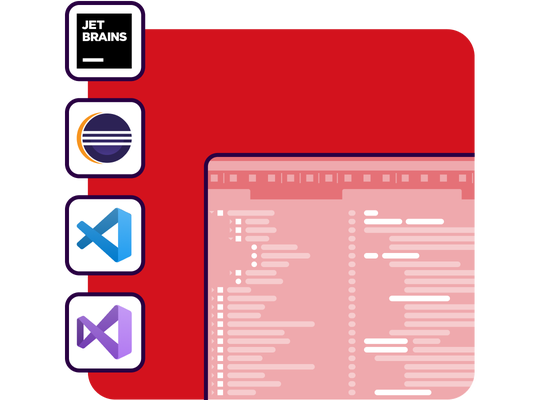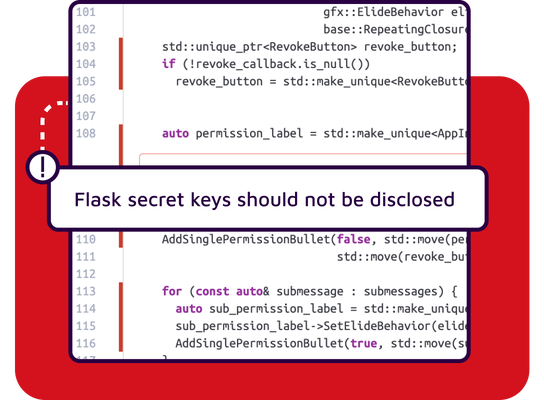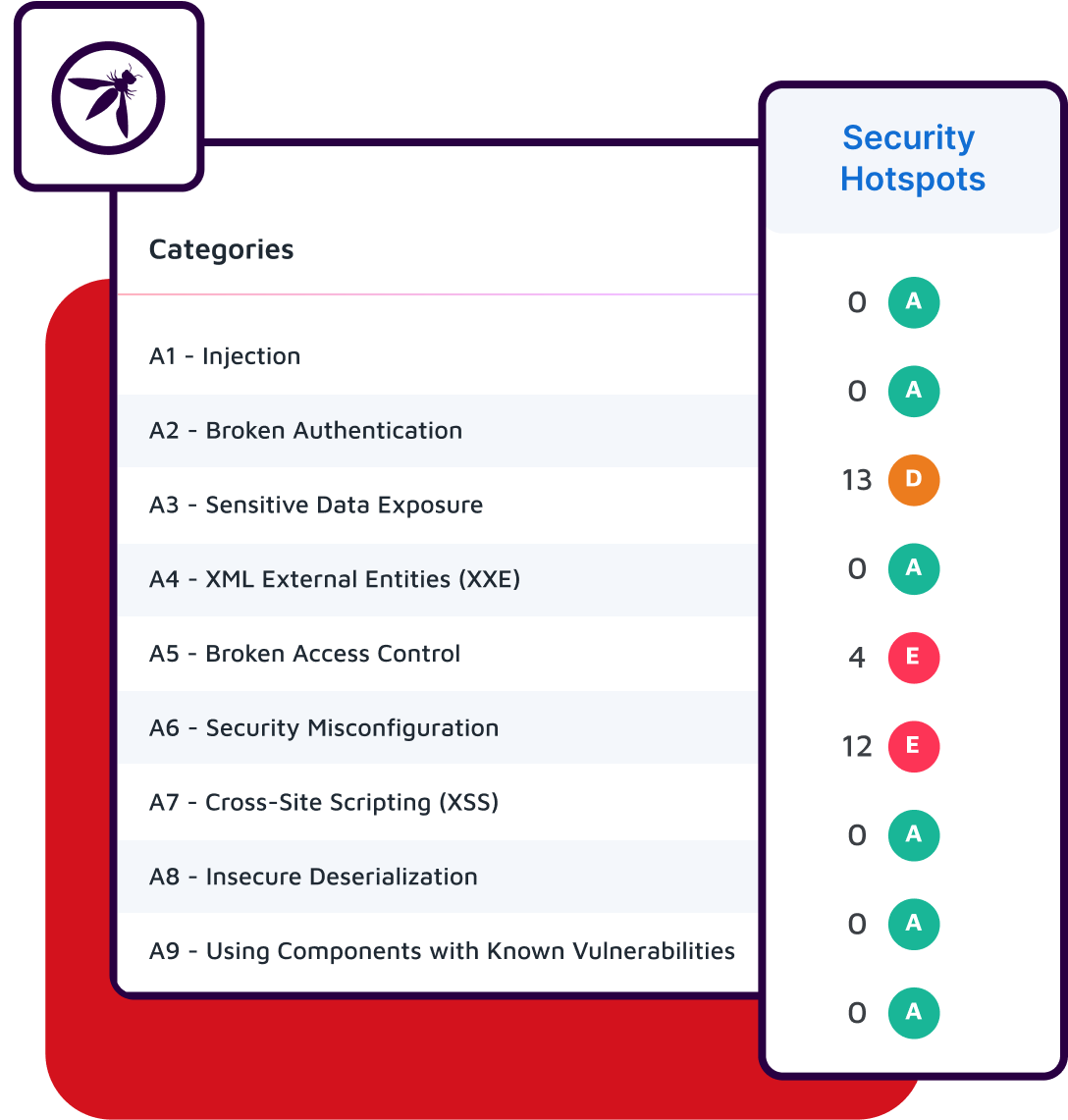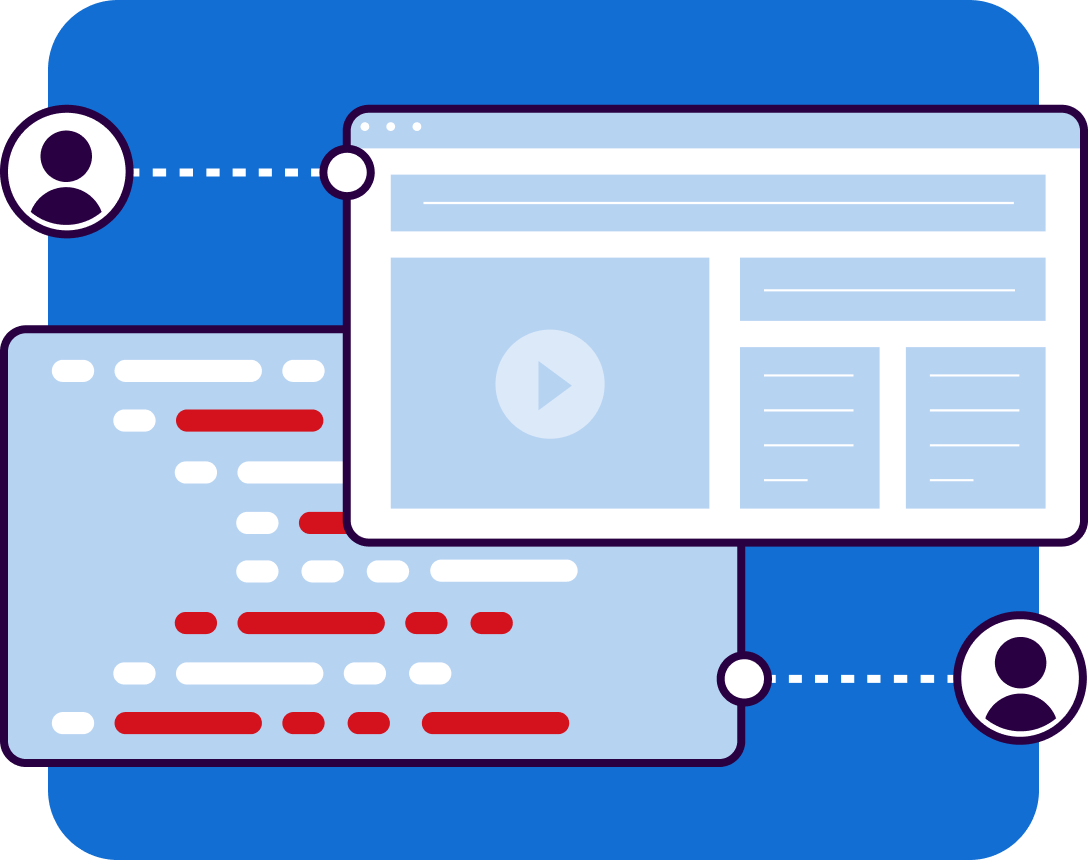Profundice con SAST avanzado
La capacidad SAST avanzada de Sonar, incluida en SonarQube Advanced Security, permite a las organizaciones identificar y resolver problemas de código de aplicaciones que se originan en interacciones con bibliotecas de código abierto de terceros. Esta característica única permite al SAST de Sonar rastrear el flujo de datos que entra y sale de las bibliotecas, descubriendo de forma eficaz vulnerabilidades de seguridad profundamente ocultas que otras herramientas no detectan.
El SAST avanzado potencia el motor SAST existente, que ya incluye análisis de contaminación profunda, reglas de seguridad exhaustivas, detección de secretos en la nube y mucho más. Ahora, con esta tecnología innovadora, las ediciones comerciales de SonarQube Server y SonarQube Cloud proporcionan una visibilidad completa del funcionamiento interno de las bibliotecas más populares, lo que garantiza un análisis de código sin igual.
Con el SAST avanzado de Sonar, las organizaciones pueden abordar con confianza los retos de seguridad del código, lograr una seguridad sólida de las aplicaciones y disfrutar de las ventajas de una base de código fiable y fortificada.
